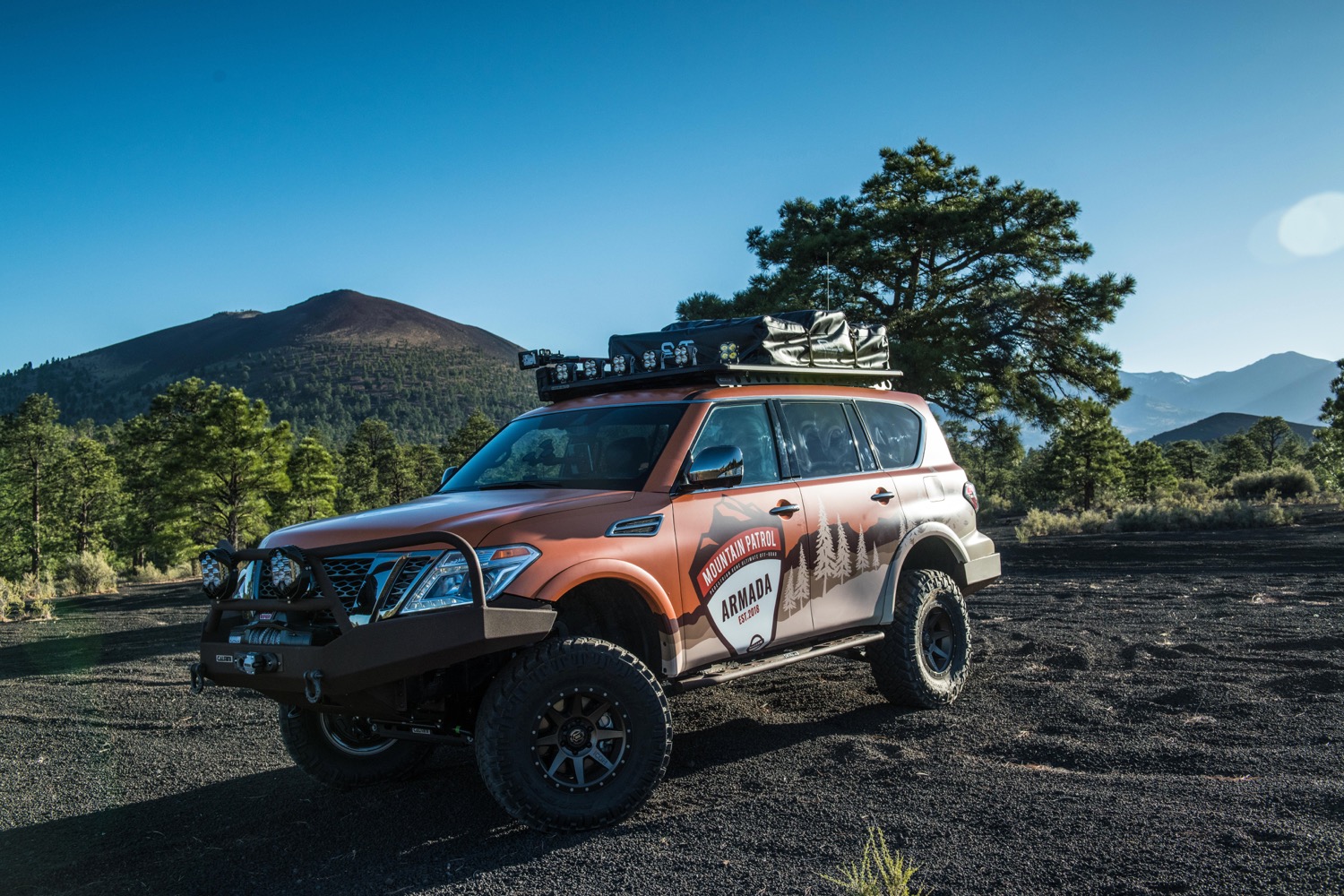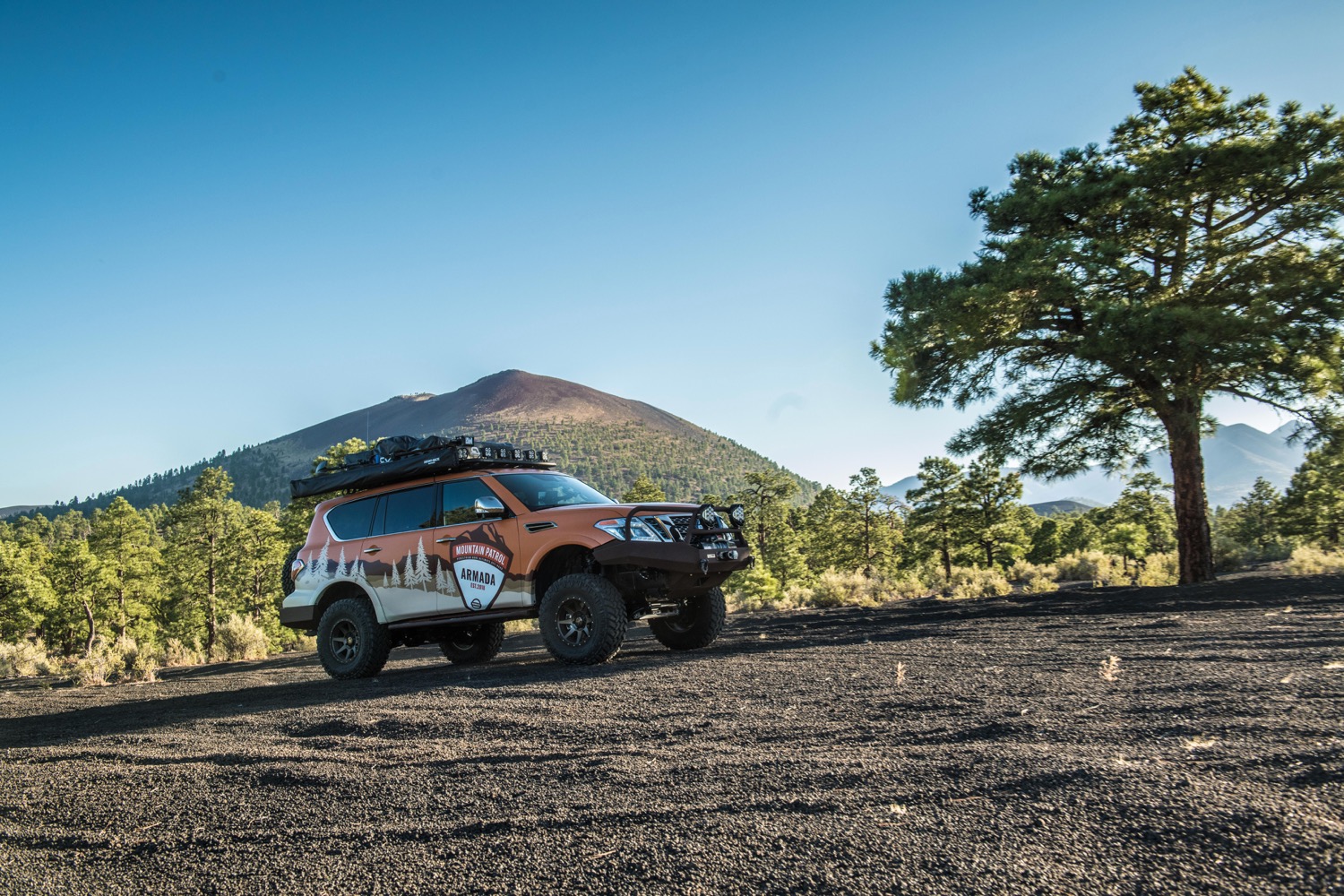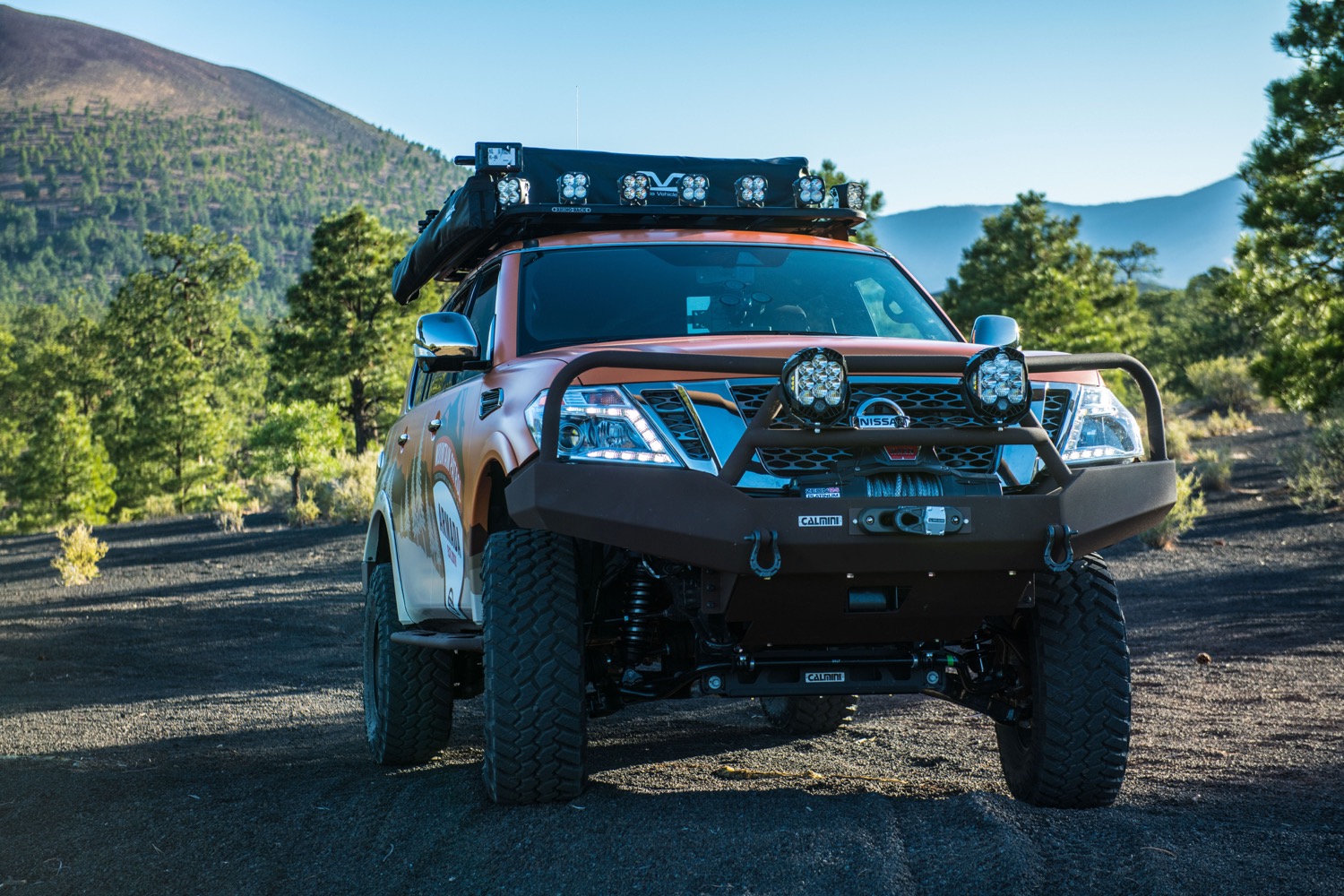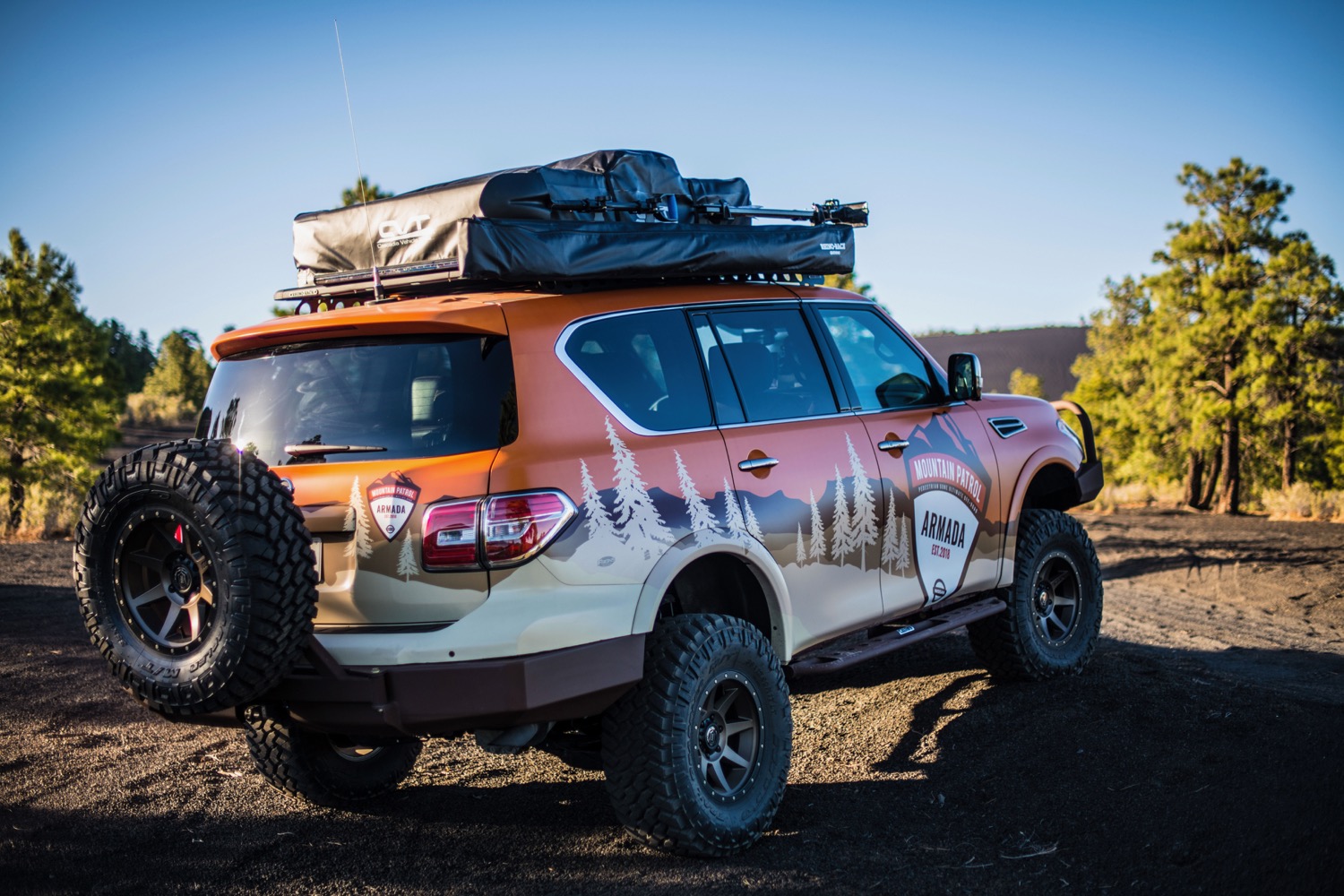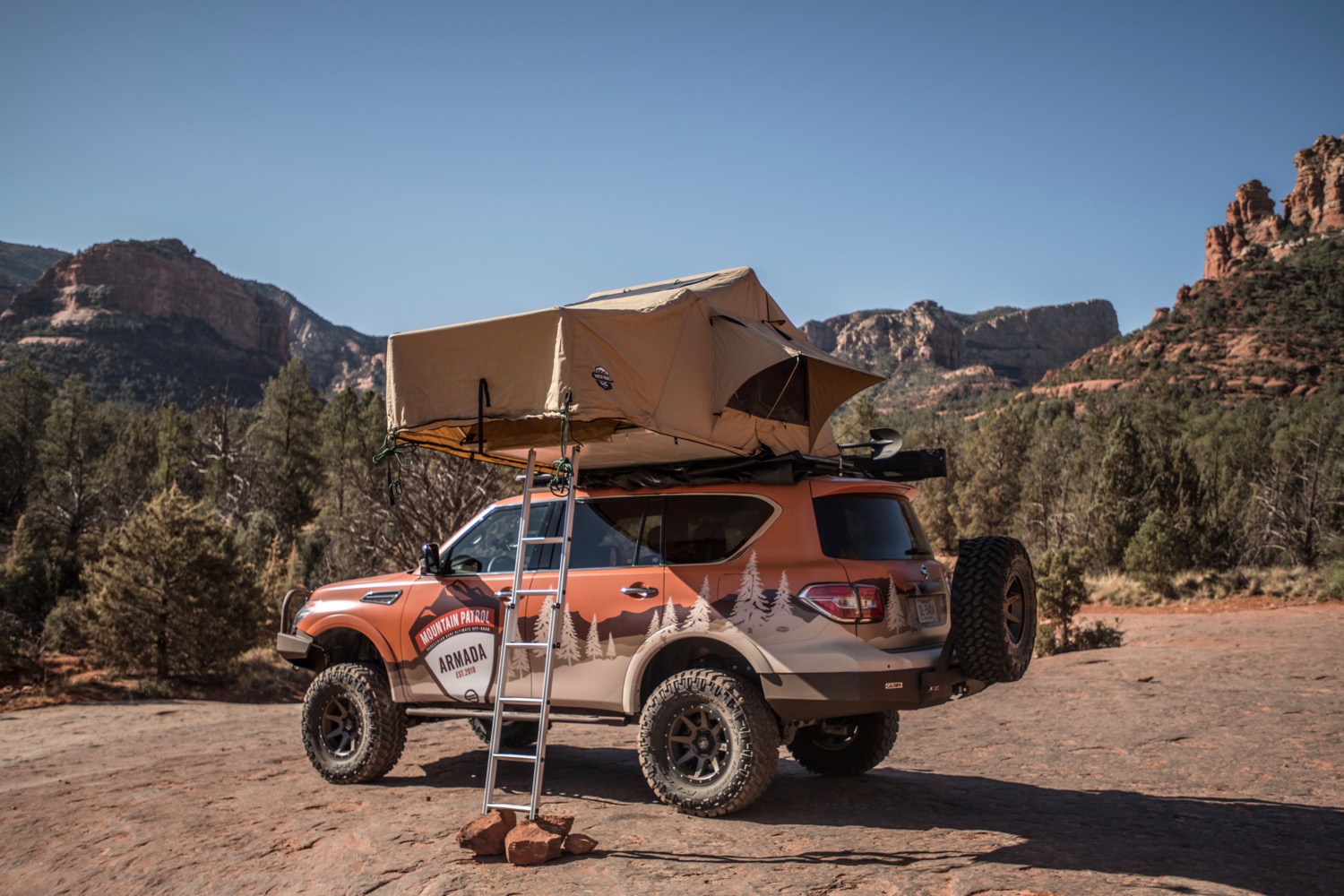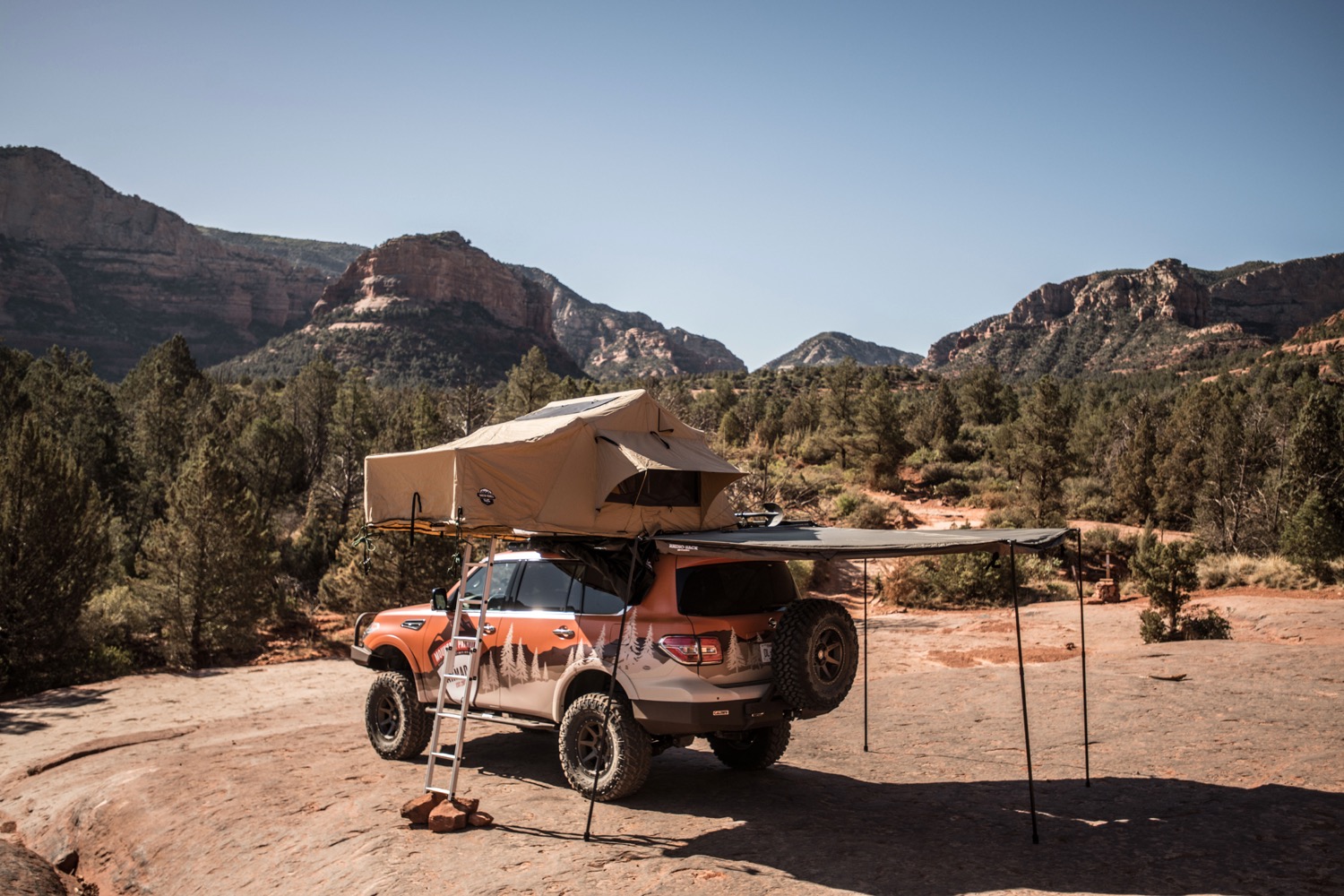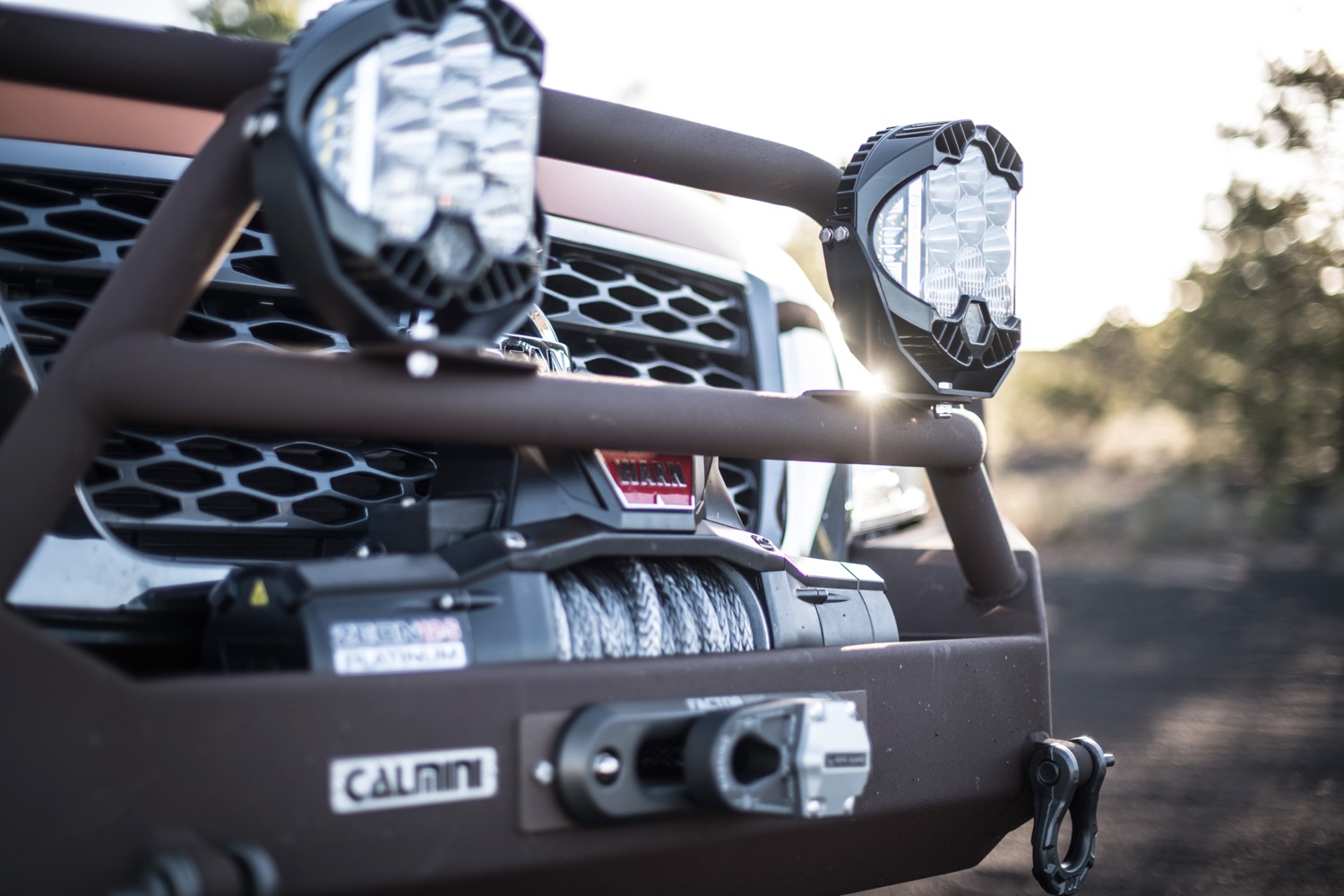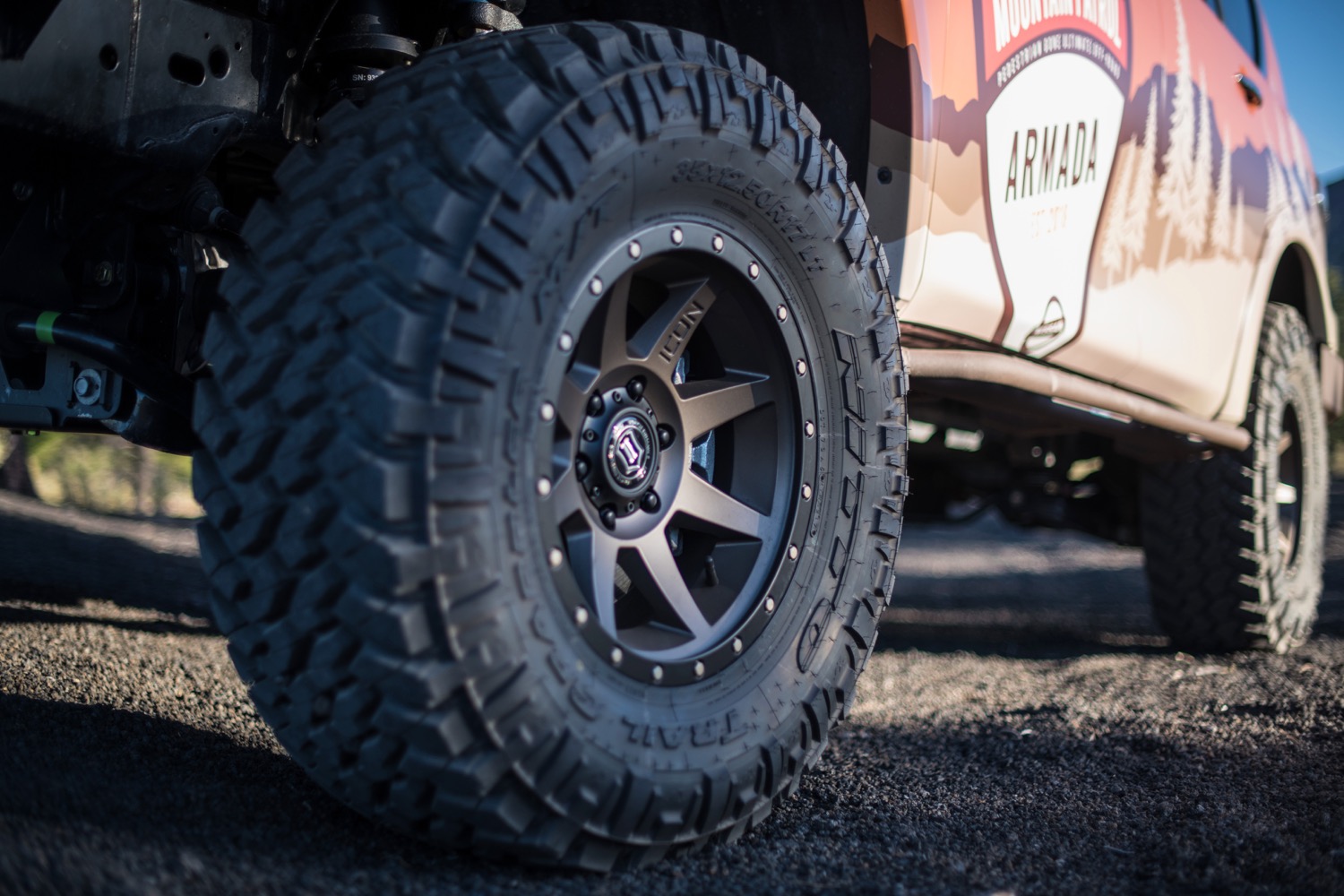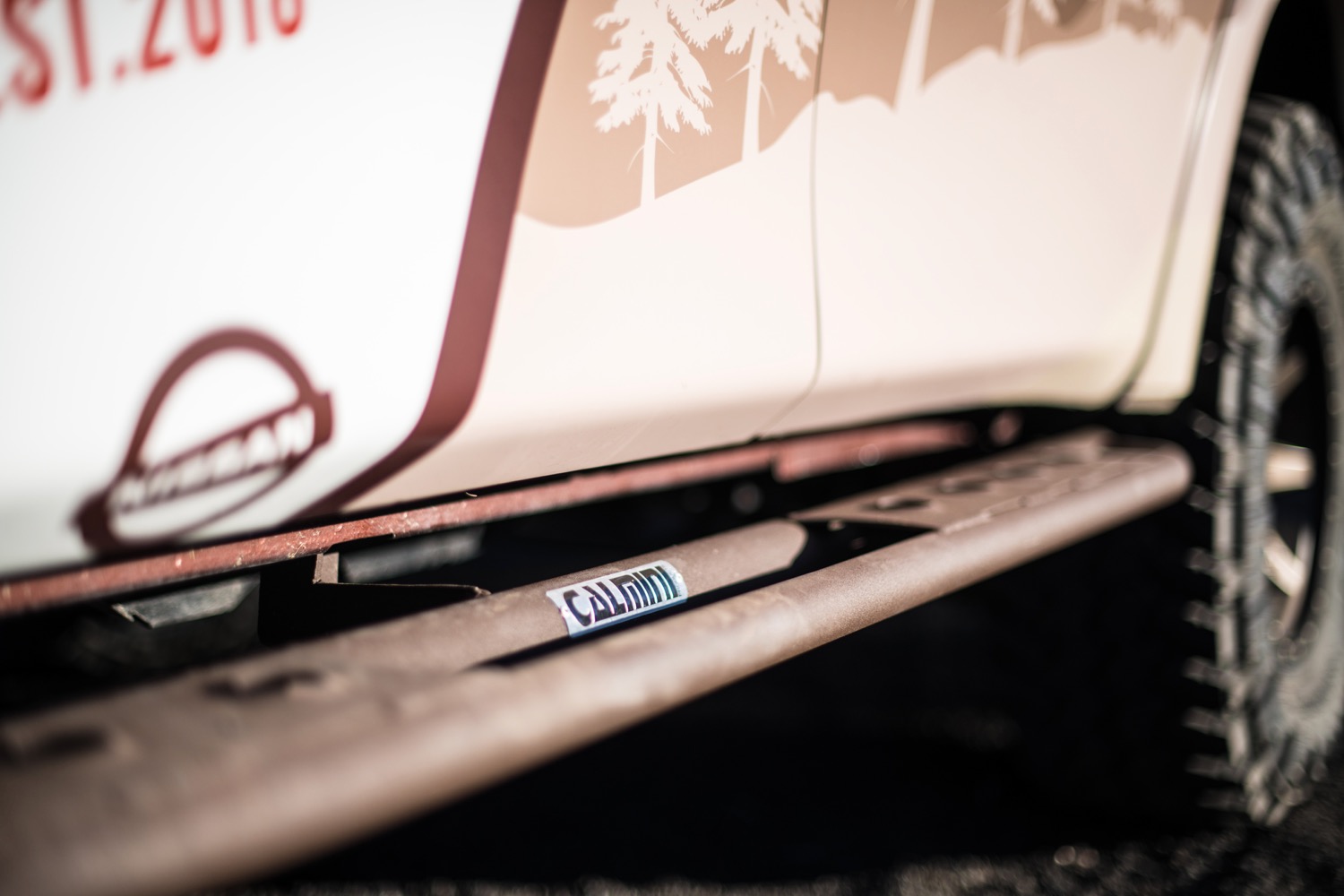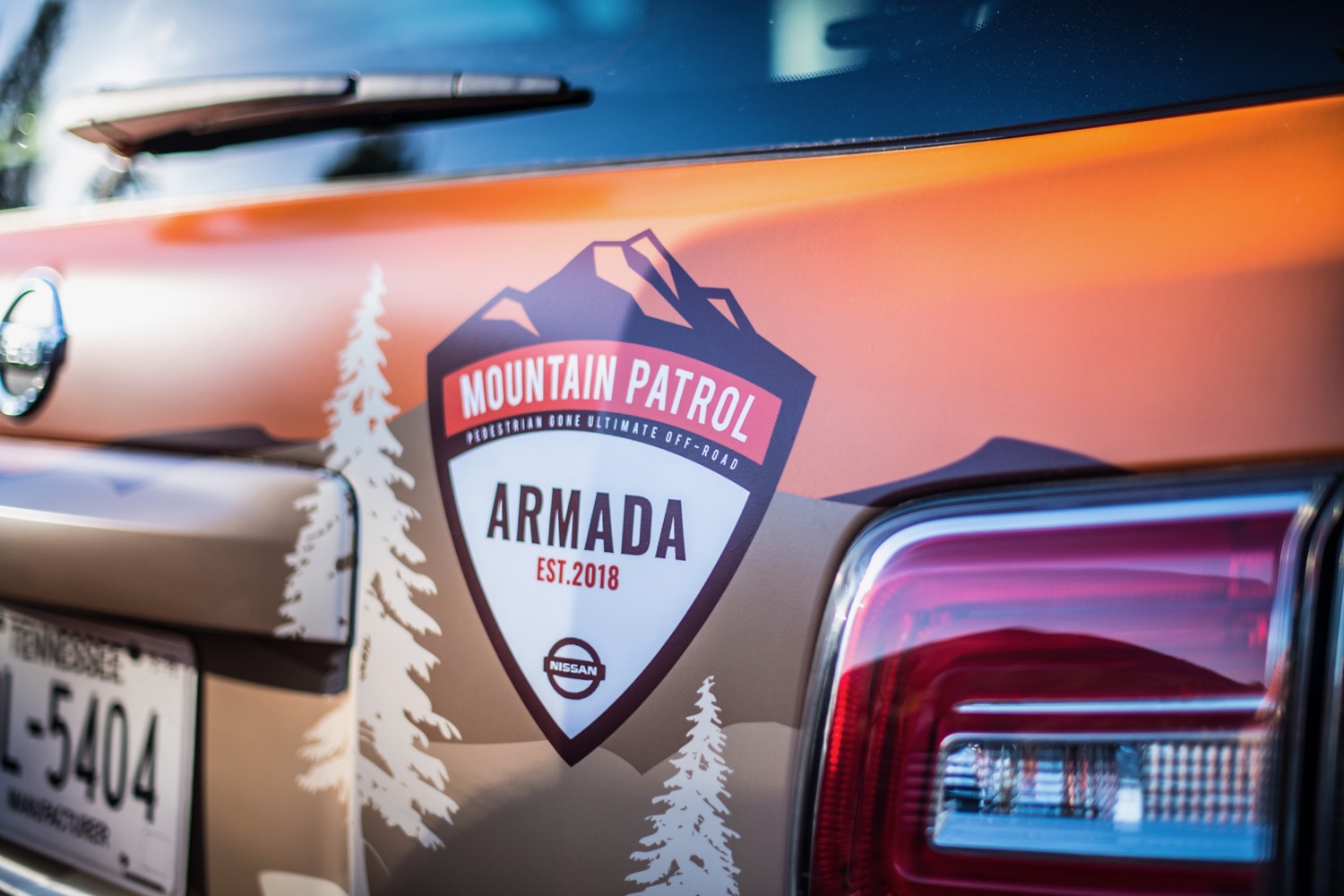After turning one of its Titan pickup trucks into a go-anywhere house on wheels called Project Basecamp, Nissan is at it again with a project vehicle based on its Armada SUV. The goal was the same: To create an overlanding rig perfect for camping, or fleeing the zombie apocalypse. But this time Nissan turned to social media for help.
Dubbed Nissan Armada Mountain Patrol, the tricked-out SUV was designed with input from social media users. Those users went to @NissanUSATrucks on Instagram and Facebook to vote on three categories of modifications — tire model, exterior vinyl wrap, and roof-mounted tent — using the hashtag #MountainPatrol. The finished vehicle will appear at the 2018 Overland Expo West in Flagstaff, Arizona, May 18-20, and will be displayed at other events over the course of the year.
So what did Nissan and its social media followers come up with? Starting at the top, the Mountain Patrol features a four-person roof-mounted Mt. Shasta tent from Cascade Vehicle Tents, as well as a custom awning from Rhino Racks, and a smaller pop-up tent, sleeping bags, and chairs from Alps Mountaineering. A number of different trays and storage bins house all of the necessary gear for an overlanding trip, plus a Lowrance navigation system and Rugged Radios radio system.
Nissan fitted 17-inch Icon Rebound wheels with Nitto Grappler 35/12.25/17 tires. Custom front and rear bumpers, rock sliders, and a spare tire swing-away make the SUV look a bit tougher, and should protect the bodywork while off roading. A 12,000-pound Warn winch is mounted on the front bumper in case the vehicle gets stuck. An LED light bar, front fog lights, and a custom vinyl wrap finish off the exterior modifications.
The Mountain Patrol uses the same 5.6-liter V8 as the stock Armada, which produces 390 horsepower and 394 pound-feet of torque. Nissan added a Magnaflow cat-back exhaust system. Power is sent to all four wheels through a seven-speed automatic transmission.
The name Mountain Patrol references the fact that the Armada is sold as the Nissan Patrol in other markets. While the current generation has only been sold in the United States since the 2017 model year, the Patrol has been sold in international markets for decades. U.S. buyers may be less familiar with it, but the Patrol’s reputation for off-road prowess rivals that of the Land Rover Range Rover and Toyota Land Cruiser abroad.
The U.S.-spec Armada (along with its Infiniti QX80 luxury sibling) is one of the last old-school SUVs still sold here. A body-on-frame design and traditional four-wheel drive system don’t do the Armada many favors when it comes to refinement, on-road driving dynamics, or fuel economy, but they give this SUV real off-road capability. The Armada stands in contrast to the car-based crossovers that populate most automakers’ lineups (including Nissan’s). Those vehicle may look rugged, but they can’t stray too far from the pavement.
Updated on May 17: Added more information and photos of the finished product.
Editors' Recommendations
- Tesla Model Y vs. Nissan Ariya: Can Tesla take out Nissan’s electric crossover?
- Nissan used its car seat design experience to create these cool gaming chairs
- U.S. firm plans to power soccer stadiums using aging Nissan Leaf batteries
